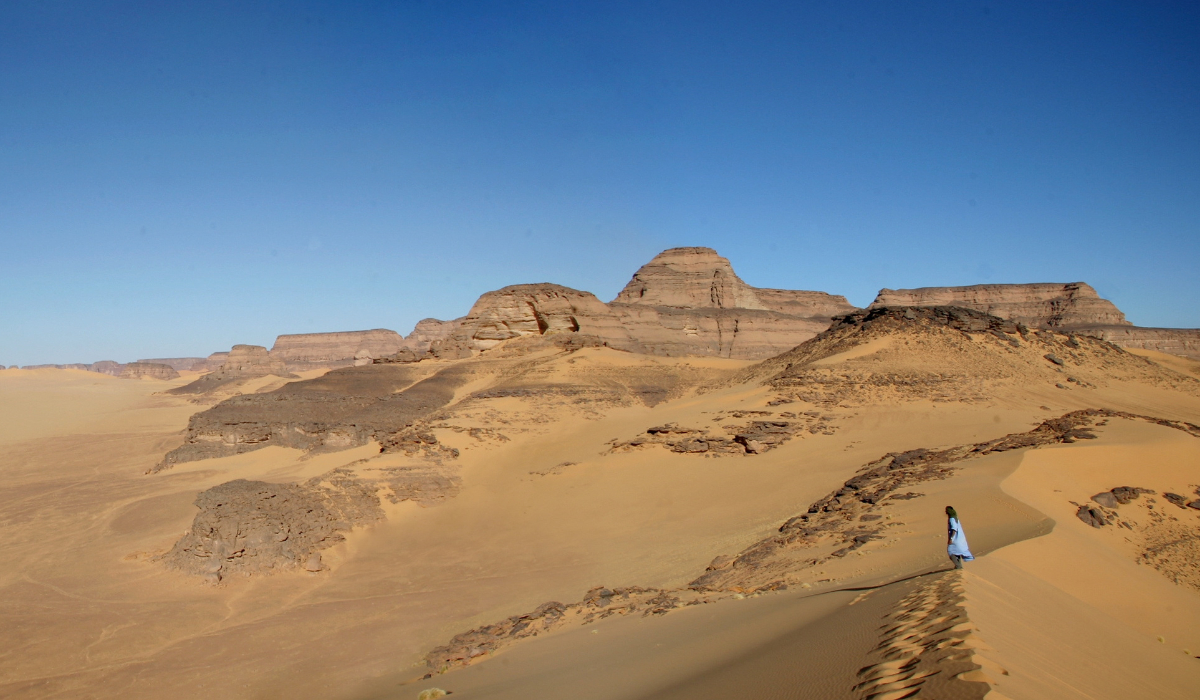WEST PALM BEACH, Florida: Friday marked the start of the annual Florida Python Challenge, where hunters head into the Everglades to track down invasive Burmese pythons in hopes of grabbing a share of $30,000 in prizes.
The annual 10-day hunt, which started more than a decade ago, promotes public awareness of issues with invasive species in Florida while engaging the public in Everglades conversation, said Sarah Funck, the wildlife impact management section leader with Florida Fish and Wildlife Conservation Commission.
“They are a well-established invasive species across much of South Florida, unfortunately, in our natural areas,” Funck said of Burmese pythons. “A huge part of this challenge is to make sure that people understand about this issue and understand that in general, when you have a non-native species present in the state for whatever purpose, don’t let it loose, that can be really detrimental to our environment.”
Over the past decade, the python challenge has grabbed headlines for its incentive-based, only-in-Florida style of hunting as well as celebrity participation. This year, more than 600 people registered for the event, with two coming from Canada and 108 from other states.
During the challenge, hunters will linger around designated areas spanning through western Broward County to the Tamiami Trail in the Big Cypress Wildlife Management Area, including other management areas like Southern Glades, Holey Land and Rotenberger.
The goal is to humanely kill as many pythons as possible, and prizes divide between three groups: professional hunters who work for the state, hunters who are active in the military or are veterans and novice hunters, which includes anyone who is not working as a state contracted python hunter.
Each category has its own prizes, with $2,500 going to the person or team that kills the most pythons, $1,500 going to the runner-up for most kills and $1,000 going to whoever kills the longest python. The grand prize for the most kills in all categories gets a $10,000 prize.
Each person can only win one prize, so if someone is tops in two categories, they will end up with the highest-valued prize and the next qualifying hunter gets the remaining prize.
In 2017, the South Florida Water Management District and the state began hiring contractors to handle its invasive python problem year round. According to the wildlife agency’s website, through 2023, more than 11,000 pythons have been removed by these contractors.
Last year’s challenge brought in 209 pythons and the grand prize winner was Paul Hobbs, who bagged 20 pythons. Also during 2023, Florida wildlife agency and district contractors removed about 2,200 pythons.
Amy Siewe, the self-named Python Huntress, won a prize last year for catching a Burmese python measuring 10 feet and 9 inches (327 centimeters). This year, she won’t be participating in the challenge due to a knee surgery but said she’s not a fan of the annual challenge.
Siewe, who used to work as a state contractor catching invasive pythons, said she believed the initial intent of the challenge was to bring awareness to the issue. Now, it’s drawing large crowds of hunters, potentially scaring off pythons and potentially killing native snakes they mistake as pythons, like corn snakes, brown water snakes or cottonmouths.
“Pythons don’t take on their normal behavioral pattern because there’s so much traffic and they’ll come up and then they’ll go back into the swamp,” Siewe said. “I feel for myself, it’s counterproductive.”
Participants are required to undergo an online training, including information on how to identify Burmese pythons versus other snakes, Funck said. She said there’s also an additional optional in-person training participants can attend to properly identify Burmese pythons.
“That’s a huge part of what we do, is try to get the word out on how to identify these pythons, how to safely and humanely capture it,” Funck said.
Snake hunters will wrangle invasive Burmese pythons in Everglades during Florida’s 10-day challenge
https://arab.news/96drd
Snake hunters will wrangle invasive Burmese pythons in Everglades during Florida’s 10-day challenge

- Annual 10-day hunt promotes public awareness of issues with invasive species in Florida while engaging the public in Everglades conversation
- Over the past decade, the python challenge has grabbed headlines for its incentive-based, only-in-Florida style of hunting as well as celebrity participation





























